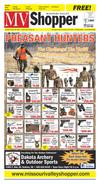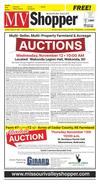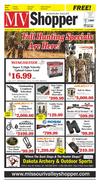092215_YKMV_A19.pdf



shop online at www.missourivalleyshopper.com
September 22, 2015 • Page 19
What is this fruit… and is it edible?
leaves, with fruit in clusters
arranged with each attaching to the cluster stem at a
single point; each berry has
a single seed. The fruit clusters may resemble Elderberry fruit clusters (Fig. 5), but
elderberries have compound
leaves.
With the exception of
haskaps or honeyberries
(discussed earlier this year),
Honeysuckle bushes and
vines (Lonicera spp.) do not
have edible fruit. Honeysuckles, whether vine or shrub
types, all have opposite
leaves and hollow stems;
most of them have red berries that are set in pairs, and
M I S S O U R I VA L L E Y
Change What You Eat - Change How You Feel
Prices Good September 22 - October 5
ON ANY ITEM
3¢ IN THE HEALTH
MARKET GLUTEN
FREE AISLE
EARN
E R OFF
G A L LO
P
Home Design Center
Domata
Gluten
Free
Flour
¢
10
N
P
3
$
79
5.4 ounce package
Gluten free, kosher
and a whole grain
3.49
Want your REAL-TIME MESSAGE
on the most visited media website
Sunset Angel Sweet
tomatoes the Yankton area?
in pint
5
4
Dairy free, soy free and gluten free
Pizzas
99
99
Live Kombucha
Soda
/5
2 $
00
Saturday, September 26 • 10am-3pm
Hy-Vee/Avera Healthy You Mobile bus
FREE Blood pressure and body fat assessments
and a Gluten Free Sampling event!
save 2¢ per
gallon with each item purchased
Join our ‘Friends2Follow’ program!
EARN
N
E R OFF
G A L LO
Kenny
Tomek
Hy-Vee
Dietitian
• Weight Loss
• Heart Disease
• Diabetes
• Gluten-free
and other food
intolerances
• Other Nutrition
concerns
Charity
Schantz
Hy-Vee
Health
Market
Manager
EARN
2¢
E R OFF
G A L LO
P
2¢
P
P
N
Frozen Daiya
Products
Roland ?avored
Quinoa
YANKTON
WORKS
E R OFF
G A L LO
4 pound bag
$
E R OFF
G A L LO
New!
$
99 Cheeze $
Cakes
EARN
2 605-665-7811
when you’ve
got the right
direction
MV Shopper
MV Shopper
FURNITURE
Contact your Yankton Media Representative today!
¢
finding the right
job is easier
than you think
M I S S O U R I VA L L E Y
hatch
EARN
often helpful also if you take
a photo of a branch showing
several leaves. ?iGrow
Stop searching. The
Help Wanted section
of the Missouri Valley
Shopper list many
possible new job
opportunities.
Find a career that’s
right for you.
Participating Businesses Are…
2
contain multiple seeds per
berry.
Mountain ash has orangish-red fruit, with compound
leaves and several seed
(Fig.6). Birds appreciate the
fruit, but to be (somewhat)
edible for humans it must be
cooked, after which it may
be made into jelly or even
wine.
If in doubt about the
edibility of a fruit, always
check with an expert. It will
be helpful to them if you
note the leaf arrangement on
the plant, and either send a
fruit cluster, or send a photo
with fruit cut open or the
number of seed noted. It is
N
which have leaves arranged
in pairs (opposite each other
on the stem), and buckthorn,
which usually has leaves just
slightly offset from opposite.
Mountain-ash and Elderberry both have compound
(multiple leaflets) leaves; the
leaflets are opposite each
other, but the compound
leaves are arranged in an
alternate pattern on the twig
on Mountain-ash and in an
opposite pattern on elderberries. (One can distinguish
a leaflet from a leaf by looking for the new bud forming
between the leaf petiole and
the branch; the base of leaflets have no such buds.)
Once you know whether
the fruit has one or several
seeds, the basic plant structure (tree, shrub, or vine),
and the leaf arrangement
(alternate or opposite) you
should have the information needed to identify most
of the different fruits you
will find growing in South
Dakota.
For example, how do you
distinguish chokecherry (Fig
1) or aronia (Fig. 2) from
buckthorn (Fig. 3)?
Buckthorn can make you
sick
This is an important
distinction, because the fruit
looks somewhat similar, and
buckthorn berries can make
you quite sick!
If you have only the fruit
to examine, look for how
many seed there are in the
fruit (always check sev-
N
BROOKINGS, S.D. - In midto late-summer, we often
receive questions on how to
identify fruit and whether
or not a particular fruit is
edible. To identify a fruit, it
is helpful to know both plant
and fruit characteristics:
Woody or herbaceous plant?
Vining or upright?
Do the leaves attach
to the stem opposite each
other (i.e., paired), or do
they alternate from one side
of the stem to the other?
What size and color are the
fruit? Is each fruit’s stem
attached directly to the twig,
or are they in a cluster that
attaches to the twig?
And, one question I find
often helpful in distinguishing among smaller fruits,
does it have a single pit, or
are there several seed in
each fruit?
Shrubs or trees in the
Dakotas bearing fruit with a
single seed or “pit” include
various kinds of cherries,
chokecherries, plums, apricots, viburnum, buffaloberries, and dogwood. Most of
these have alternate leaves;
however, viburnums, buffaloberry and most dogwoods
have opposite leaves.
Fruits with several seeds
include aronia, buckthorn,
elderberries, pears, apples,
juneberries, mountain-ash,
hawthorn, grapes, honeysuckles, and snowberry.
These all have alternate
leaves, except for honeysuckles, and snowberry,
eral berries): buckthorn and
aronia usually have multiple
seeds per berry, whereas
chokecherries will have one.
To distinguish between
aronia and buckthorn, you
may need to examine the
plant. Look at the leaf arrangement -aronia leaves
are always in alternate
arrangement (never paired),
whereas buckthorn leaves
are essentially opposite.
The arrangement of the
fruit on the stem is also an
important distinction - each
buckthorn berry attaches
directly to the branch, while
aronia (and chokecherries)
are borne in clusters of fruit,
with each cluster having
a single attachment to the
branch.
Sand cherries (Prunus
pumila or P. besseyi) are
another edible fruiting shrub
that might be confused with
buckthorn, due to the dark
fruit color and arrangement.
As with chokecherries,
the single pit in the fruit,
and alternate leaf arrangement of the Prunus species
distinguishes them from the
buckthorn.
Black currant (Fig. 4) fruit
can also resemble buckthorn
fruit, and they both have
multiple seed. However, currant leaves are very distinctive, with three lobes similar
to a maple leaf in shape; they
are rough to the touch and
are arranged alternately on
the stem. Currant fruit are
also in clusters, not attached
directly to the stem. All currants are edible, although
some, such as the alpine
currant, are noted as being
“insipid’ (bland flavor).
Several other ornamental
shrub plants bear fruit that
look appealing, but are probably best left to the birds.
Some viburnum have edible
fruit, but many are mildly
poisonous, so those are best
left to the experts.
Viburnum have opposite




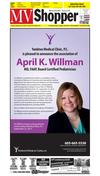
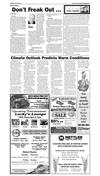
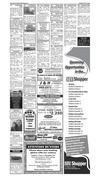
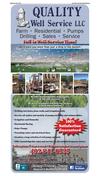
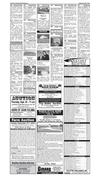
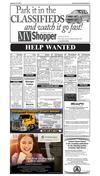
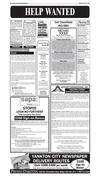

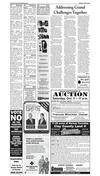
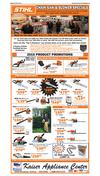
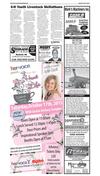
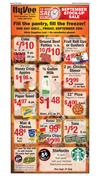
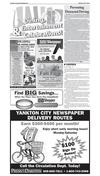
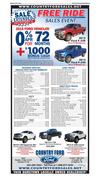
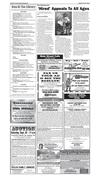
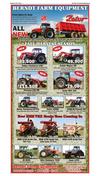
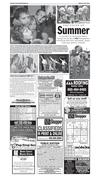
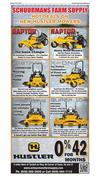
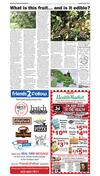
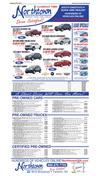
 Previous Page
Previous Page


